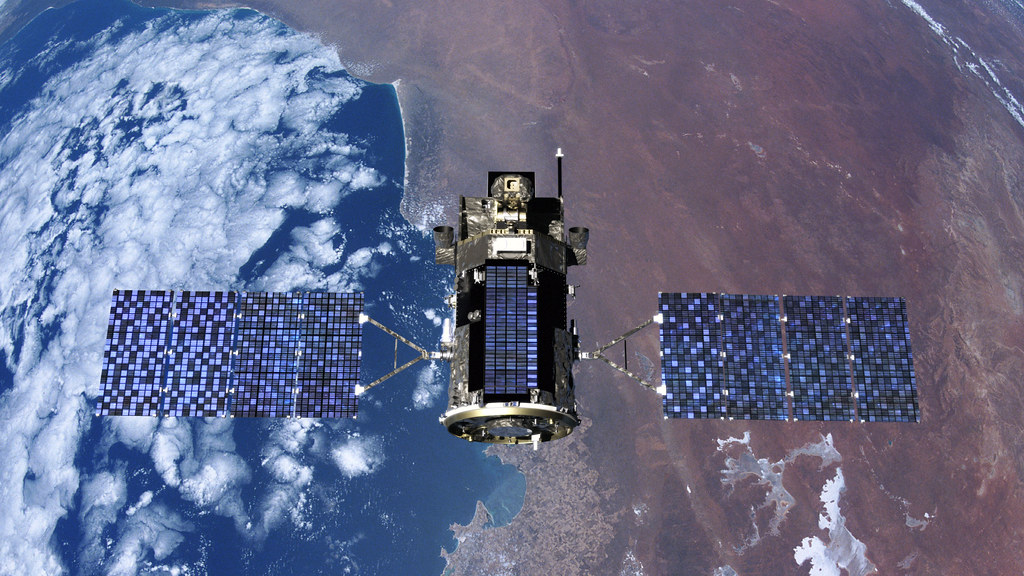What is High Throughput Satellite? Detailed Insights and Comprehensive Guide 2024

Table of Contents
What is High Throughput Satellite? A Comprehensive Guide
In the rapidly evolving landscape of satellite communications, one term that has gained significant traction is “high throughput satellite” (HTS). But what is a high throughput satellite, and why is it considered a game-changer in the industry? This article delves deep into the intricacies of high throughput satellites, exploring their technology, benefits, applications, and future potential to provide a thorough understanding of this transformative innovation.
what is high throughput satellite ?
In the rapidly evolving landscape of satellite communications, understanding “what is a high throughput satellite” is essential. High Throughput Satellites (HTS) are advanced communication satellites designed to provide significantly higher data transmission rates compared to traditional satellites.

They achieve this through the use of sophisticated technologies such as frequency reuse and spot beams. Frequency reuse allows HTS to utilize the same frequency bands across multiple narrow beams, vastly increasing their capacity without needing additional spectrum. These spot beams focus the satellite’s power on specific areas, enhancing data throughput and reducing interference.
Additionally, HTS employs advanced modulation and coding techniques to optimize data transmission. These techniques involve varying signal properties to encode information and adding redundancy to detect and correct errors, ensuring efficient and reliable data delivery.
By maximizing the use of available bandwidth and improving signal quality, high throughput satellites can support more users and deliver faster, more reliable connectivity than conventional satellites, making them a game-changer in the industry.
Key Features of High Throughput Satellites
| Feature | Description |
|---|---|
| Frequency Reuse | Utilizes the same frequency bands across multiple narrowly focused spot beams, significantly increasing overall capacity without additional spectrum. |
| Spot Beams | Employs multiple highly focused spot beams that target specific regions, enhancing signal strength and data throughput while reducing interference. |
| Advanced Modulation and Coding | Uses sophisticated modulation to vary signal properties for encoding information and coding techniques to add redundancy for error detection and correction, ensuring efficient and reliable data transmission. |
Understanding “what is a high throughput satellite” involves recognizing the advanced features that set these satellites apart from traditional ones. High Throughput Satellites (HTS) incorporate several key technologies that enable their superior performance and capacity.
Frequency Reuse
A crucial feature of high throughput satellites is frequency reuse. Traditional satellites often use broad beams that cover extensive areas, but HTS utilizes multiple narrowly focused spot beams. These spot beams can reuse the same frequencies across different geographic regions, significantly increasing the satellite’s overall capacity. This efficient utilization of the frequency spectrum allows HTS to support more users and higher data rates without requiring additional spectrum resources.
Spot Beams
High throughput satellites employ multiple spot beams instead of single, wide beams. These spot beams are highly focused and target specific regions with greater precision. The use of spot beams enhances the efficiency of frequency reuse and improves signal strength and data throughput. This targeted approach allows for higher capacity and better performance in delivering data services to end-users.
Advanced Modulation and Coding Techniques
Advanced modulation and coding techniques are another defining feature of high throughput satellites. Modulation involves varying signal properties to encode information, while coding adds redundancy to detect and correct errors. These sophisticated techniques ensure that data is transmitted efficiently and reliably, even in challenging conditions. By maximizing the use of available bandwidth and improving signal quality, HTS can deliver superior performance compared to traditional satellites.
What are the Differences Between High Throughput Satellites and Traditional Fixed Satellite Services?
Understanding what is high throughput satellite entails comparing it to Traditional Fixed Satellite Services (FSS). These two satellite communication technologies differ in several key aspects, including capacity, technology, efficiency, applications, and future potential. The table below summarizes these differences:
| Aspect | High Throughput Satellites (HTS) | Traditional Fixed Satellite Services (FSS) |
|---|---|---|
| Capacity and Data Rates | Significantly higher data rates due to multiple spot beams and frequency reuse | Lower data rates due to wide beams covering large areas |
| Technology | Uses advanced frequency reuse with narrowly focused spot beams | Uses broader beams with less efficient spectrum usage |
| Efficiency | More efficient and cost-effective, reducing cost per bit | Less efficient, leading to higher costs for equivalent services |
| Applications | Ideal for broadband internet, HD video streaming, enterprise connectivity, remote area internet, in-flight, and maritime connectivity | Commonly used for broadcasting services like television and radio |
| Future Potential | Rapid advancements in LEO constellations and 5G integration | Evolving, but may not keep pace with HTS advancements |
By understanding what is high throughput satellite and comparing it to traditional fixed satellite services, one can see how HTS offers superior performance, efficiency, and versatility, making it a transformative technology in the satellite communication industry.

Capacity and Data Rates
One primary disparity lies in their capacity and data rates. High Throughput Satellites (HTS) deliver significantly higher data transmission rates compared to Traditional Fixed Satellite Services (FSS). This is due to HTS employing multiple spot beams and frequency reuse techniques. In contrast, FSS typically utilizes wide beams covering large areas, resulting in lower overall capacity and data rates.
Technology and Frequency Reuse
HTS uses advanced frequency reuse technologies, employing multiple narrowly focused spot beams that can reuse the same frequency bands across different regions. This dramatically increases capacity and efficiency. FSS, on the other hand, generally operates with broader beams and does not utilize the same level of frequency reuse, leading to less efficient spectrum usage.
Efficiency and Cost-Effectiveness
HTS is known for being more efficient and cost-effective than FSS. Its ability to use frequency reuse and spot beams allows for more data transmission per unit of spectrum, reducing the cost per bit. This efficiency translates into lower operational costs and more affordable services for end-users.
Applications and Use Cases
HTS is particularly suited for bandwidth-intensive applications such as broadband internet, high-definition video streaming, and enterprise connectivity. Its high capacity and efficiency make it ideal for providing internet access to remote areas, supporting in-flight and maritime connectivity, and enhancing disaster response communications. FSS, while still valuable, is more commonly used for broadcasting services, such as television and radio.
Future Potential and Advancements
High Throughput Satellites are at the forefront of satellite communication innovation, with ongoing developments in areas such as low Earth orbit (LEO) constellations and integration with 5G networks. These advancements promise to further enhance the capabilities and applications of HTS. Traditional FSS, while still evolving, may not keep pace with the rapid advancements seen in HTS technology. Understanding what is high throughput satellite underscores its dynamic and forward-looking nature compared to traditional FSS.
Technological Advancements of High Throughput Satellites
Understanding what is high throughput satellite involves delving into the technological advancements that set High Throughput Satellites (HTS) apart from traditional satellites. These innovations enable HTS to provide superior capacity, efficiency, and performance.
| Technological Advancement | Description |
|---|---|
| Frequency Reuse Technology | Utilizes the same frequency bands across multiple spot beams to dramatically increase capacity. |
| Spot Beam Technology | Employs multiple narrowly focused spot beams to enhance signal strength and data throughput. |
| Advanced Modulation and Coding | Uses sophisticated modulation and coding techniques to ensure efficient and reliable data transmission. |
| High-Capacity Payloads | Features advanced payloads with digital processors and flexible bandwidth allocation to handle vast amounts of data. |
| Integration with Emerging Technologies | Integrates with technologies like 5G networks and low Earth orbit (LEO) constellations to expand coverage and enhance connectivity. |
Understanding what is high throughput satellite involves recognizing how these technological innovations enable HTS to deliver superior performance, efficiency, and capacity, making them a transformative force in satellite communications.
Frequency Reuse Technology
One of the key technological advancements in high throughput satellites is frequency reuse. What is high throughput satellite without its ability to utilize the same frequency bands across multiple spot beams? This is achieved through advanced frequency reuse techniques, which dramatically increase the satellite’s overall capacity. By reusing frequencies, HTS can serve more users and deliver higher data rates compared to traditional satellites, which often use broad beams covering large areas with no frequency reuse.
Spot Beam Technology
Spot beam technology is another significant innovation in high throughput satellites. Unlike traditional satellites that cover extensive areas with single, wide beams, HTS uses multiple narrowly focused spot beams. Understanding what is high throughput satellite involves recognizing how these spot beams enhance signal strength and data throughput by concentrating power on specific regions. This focused approach not only improves performance but also enables more efficient use of the satellite’s capacity.
Advanced Modulation and Coding Techniques
Advanced modulation and coding techniques are crucial to the superior performance of high throughput satellites. What is high throughput satellite without these sophisticated methods? Modulation involves varying the signal properties to encode information, while coding adds redundancy to detect and correct errors. These techniques ensure efficient and reliable data transmission, even in challenging conditions. High Throughput Satellites utilize these methods to maximize bandwidth utilization and improve signal quality, making them far more effective than traditional satellites.
High-Capacity Payloads
High Throughput Satellites are equipped with high-capacity payloads that support increased data processing and transmission capabilities. Understanding what is high throughput satellite means appreciating the advanced payload designs that enable HTS to handle vast amounts of data. These payloads incorporate cutting-edge technologies such as digital processors and flexible bandwidth allocation, allowing HTS to dynamically manage and optimize data traffic, enhancing their overall efficiency and effectiveness.
Integration with Emerging Technologies
The integration of HTS with emerging technologies such as 5G networks and low Earth orbit (LEO) constellations further exemplifies what is high throughput satellite. These integrations allow HTS to complement terrestrial networks, providing seamless connectivity and expanding coverage to remote and underserved areas. By collaborating with other advanced technologies, High Throughput Satellites enhance their versatility and future-proof their capabilities.
In summary, the technological advancements of high throughput satellites, including frequency reuse, spot beam technology, advanced modulation and coding techniques, high-capacity payloads, and integration with emerging technologies, define what is high throughput satellite. These innovations enable HTS to deliver superior performance, efficiency, and capacity, making them a transformative force in satellite communications.
Future Trends and Developments in High Throughput Satellites
Understanding what is high throughput satellite involves recognizing its future trends and developments. The table below summarizes these key trends:
| Future Trend | Description |
|---|---|
| Integration with 5G Networks | High Throughput Satellites (HTS) will enhance 5G connectivity, providing seamless, high-speed internet access, especially in remote and underserved areas. |
| Expansion of Low Earth Orbit Constellations | HTS technology will be crucial in the development of Low Earth Orbit (LEO) constellations, offering low-latency and high-capacity connectivity globally. |
| Advancements in Satellite Payloads | HTS will feature more sophisticated payload designs with flexible and dynamic bandwidth allocation, improving data traffic management and optimization. |
| Enhanced Digital Processing Capabilities | HTS will include more powerful digital processors for complex on-board data processing, enhancing the efficiency and performance of satellite communications. |
These future trends and developments highlight what is high throughput satellite and its evolving impact on the global communications landscape.
Integration with 5G Networks
Understanding what is high throughput satellite includes its integration with 5G networks. High Throughput Satellites (HTS) will play a critical role in enhancing 5G connectivity, especially in remote and underserved areas. This integration will enable seamless, high-speed internet access and support the growing demand for data-intensive applications.
Expansion of Low Earth Orbit Constellations
What is high throughput satellite without considering the expansion of Low Earth Orbit (LEO) constellations? HTS technology is set to be a cornerstone in LEO developments, providing low-latency and high-capacity connectivity. These constellations will further improve global internet coverage and support advanced communication services.
Advancements in Satellite Payloads
Future advancements in satellite payloads are essential to what is high throughput satellite. HTS will benefit from increasingly sophisticated payload designs, incorporating more flexible and dynamic bandwidth allocation. This will enhance the ability of HTS to manage and optimize data traffic efficiently, meeting the demands of various applications.
Enhanced Digital Processing Capabilities
Enhanced digital processing capabilities define what is high throughput satellite in future trends. HTS will feature more powerful digital processors that can handle complex data processing tasks on board. This will improve the efficiency and performance of satellite communications, allowing for better service delivery and user experience.
In summary, the future trends and developments in High Throughput Satellites include integration with 5G networks, expansion of Low Earth Orbit constellations, advancements in satellite payloads, and enhanced digital processing capabilities. Understanding what is high throughput satellite in this context highlights its evolving role in the global communications landscape.
Impact of High Throughput Satellites on Global Connectivity
High Throughput Satellites (HTS) have revolutionized global connectivity by providing high-speed internet access, improving communication, and expanding access to information across various sectors. Understanding what is high throughput satellite involves recognizing its pivotal role in bridging the digital divide, enhancing disaster response, supporting global enterprise connectivity, and enabling advanced applications. Additionally, HTS technology has further impacts, including improving remote sensing and earth observation capabilities, facilitating in-flight and maritime connectivity, and enhancing national security. Let’s delve deeper into the specific impacts of HTS on global connectivity in the table below.
| Impact | Description |
|---|---|
| Bridging the Digital Divide | High Throughput Satellites (HTS) provide high-speed internet access to remote and underserved areas, fostering educational, economic, and healthcare opportunities. |
| Enhancing Disaster Response | HTS improves communication capabilities during emergencies, ensuring rapid, reliable connectivity for effective coordination among first responders and relief organizations. |
| Supporting Global Enterprise Connectivity | HTS offers high-capacity, reliable internet services to businesses worldwide, supporting operations in remote locations and facilitating seamless communication across global offices. |
| Enabling Advanced Applications | HTS supports bandwidth-intensive applications like telemedicine, distance learning, and high-definition video streaming, enhancing the quality of life and expanding access to vital services. |
| Improving Remote Sensing and Earth Observation | High Throughput Satellites enhance remote sensing and earth observation capabilities, enabling better monitoring of environmental changes, natural disasters, and agricultural activities. |
| Facilitating In-Flight and Maritime Connectivity | HTS technology facilitates reliable internet connectivity for in-flight and maritime applications, improving passenger experience, safety, and operational efficiency. |
| Enhancing National Security | High Throughput Satellites play a critical role in enhancing national security by providing secure and resilient communication channels for military and government agencies. |
Understanding what is high throughput satellite underscores its transformative impact on global connectivity, improving communication and access to information across various sectors.
Bridging the Digital Divide
Understanding what is high throughput satellite involves recognizing its impact on bridging the digital divide. High Throughput Satellites (HTS) provide high-speed internet access to remote and underserved areas. This connectivity helps bring educational, economic, and healthcare opportunities to communities previously without reliable internet.
Enhancing Disaster Response
What is high throughput satellite without its role in disaster response? HTS significantly enhances communication capabilities during emergencies. By providing rapid, reliable connectivity, HTS ensures that first responders and relief organizations can coordinate effectively, improving response times and disaster management.
Supporting Global Enterprise Connectivity
High Throughput Satellites (HTS) play a crucial role in supporting global enterprise connectivity. Understanding what is high throughput satellite highlights its ability to provide high-capacity, reliable internet services to businesses worldwide. This connectivity supports operations in remote locations and ensures seamless communication across global offices.
Enabling Advanced Applications
What is high throughput satellite without enabling advanced applications? HTS technology supports bandwidth-intensive applications such as telemedicine, distance learning, and high-definition video streaming. This capability is essential for modern communication needs, enhancing the quality of life and expanding access to vital services.
In summary, the impact of High Throughput Satellites on global connectivity includes bridging the digital divide, enhancing disaster response, supporting global enterprise connectivity, and enabling advanced applications. Understanding what is high throughput satellite underscores its transformative effect on worldwide communication and access to information.
Challenges and Considerations of High Throughput Satellites
Understanding what is high throughput satellite (HTS) means acknowledging its numerous benefits and challenges. These considerations must be addressed to fully realize the potential of HTS technology in various applications.
Challenges and Considerations
| Challenges and Considerations | |
|---|---|
| Spectrum Allocation | Efficient spectrum allocation is crucial for the success of HTS. Regulatory bodies need to ensure fair access and minimal interference. |
| Cost of Deployment | The deployment involves significant costs, from technology development to launch expenses. Service providers must explore innovative financing models. |
| Latency | HTS offers high capacity but higher latency compared to terrestrial and LEO satellites. Developing LEO constellations can address this issue. |
| Environmental Impact | Space industry must adopt reusable launch vehicles, end-of-life disposal plans, and eco-friendly practices to minimize environmental footprint. |
Addressing Challenges
As high throughput satellite (HTS) technology progresses, addressing challenges becomes imperative. Spectrum allocation requires careful regulation to support HTS growth without causing interference. Moreover, the cost of deployment remains a significant barrier, necessitating innovative financing models. Additionally, reducing latency and mitigating environmental impact are crucial for the sustainable development of HTS.
Future Trends and Developments of High Throughput Satellites
| Future Trends and Developments | |
|---|---|
| Integration with Emerging Technologies | HTS is integrating with LEO and MEO constellations, 5G networks, AI, and machine learning. |
| Addressing Challenges | Challenges like spectrum allocation, deployment costs, latency, and environmental impact. |
| Transformative Impact | HTS bridges the digital divide, fosters economic growth, and improves quality of life. |
| Role in Shaping the Future | HTS plays a vital role in shaping a more connected and inclusive world. |
Embracing Future Developments
The future of high throughput satellite (HTS) technology is intertwined with emerging trends. Integration with LEO and MEO constellations, along with advancements in 5G networks and AI, enhances HTS capabilities. Moreover, addressing challenges such as spectrum allocation and deployment costs is crucial for HTS’s transformative impact. As HTS continues to evolve, its role in shaping the future of connectivity becomes increasingly prominent.
Spectrum Allocation
Efficient spectrum allocation is crucial for the success of what is high throughput satellite (HTS). With growing demand for satellite communication, competition for spectrum resources intensifies. Regulatory bodies need to ensure fair access and minimal interference while supporting HTS growth.
Cost of Deployment
The deployment of what is high throughput satellite (HTS) involves significant costs, from technology development to launch expenses and ground infrastructure. Although HTS reduces the cost per bit, the initial investment is substantial. Service providers must explore innovative financing models to make HTS economically viable.
Latency
Latency is a key consideration for what is high throughput satellite (HTS), especially in applications requiring real-time communication. Geostationary HTS offers high capacity but higher latency compared to terrestrial and low Earth orbit (LEO) satellites. Developing LEO constellations can address this issue and complement GEO HTS.
Environmental Impact
The environmental impact of what is high throughput satellite (HTS) includes space debris, launch emissions, and resource sustainability. The space industry must adopt reusable launch vehicles, end-of-life disposal plans, and eco-friendly practices to minimize the environmental footprint of HTS operations.
Conclusion
Understanding what is high throughput satellite (HTS) reveals a significant advancement in satellite communication, offering unparalleled capacity and connectivity. HTS transforms connectivity, bringing high-speed internet to remote areas, supporting enterprises, and enhancing disaster response.
Future trends in what is high throughput satellite (HTS) include integration with LEO and MEO constellations, 5G networks, AI, and machine learning. Addressing challenges like spectrum allocation, deployment costs, latency, and environmental impact is crucial for HTS’s sustainable growth.
In summary, recognizing what is high throughput satellite (HTS) and its potential helps us appreciate its transformative impact. HTS bridges the digital divide, fosters economic growth, and improves quality of life, shaping a more connected and inclusive world.





